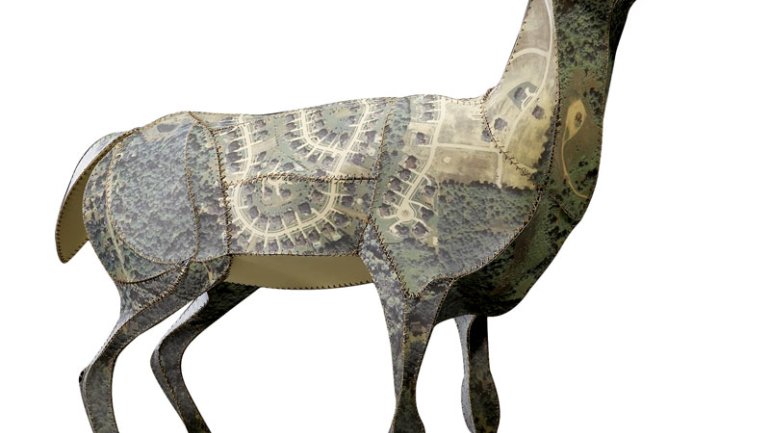Possibilities: Rising Stars of Contemporary Craft in North Carolina
Possibilities: Rising Stars of Contemporary Craft in North Carolina
These young artists share a willingness to add new techniques or materials to the
repertoires of their craft, while maintaining the highest standards of execution.
Mint Museum of Craft + Design
Charlotte, North Carolina
June 7-November 30, 2008
This compact exhibition could have been titled "The Penland Connection," for all of the artists included have strong ties to the Penland School of Crafts, in the Blue Ridge Mountains near Asheville, North Carolina. There are craft artists throughout the state, but this exhibition emphasizes the school's importance in developing talent and nurturing the skills of high craft. Of these six artists, five either have been or currently are in residence there, while the other has taught at the school. All live and work nearby. The exhibition, curated by Rob Williams, is a cogent take on recent work by young to mid-career artists in North Carolina's traditional craft categories: metal, wood, ceramics and fiber. Glass, newer to the roster, is also included.
Both wood and metal are represented in the form of furniture, another Carolina mainstay. Vivian Beer (b. 1977) does not work in the hand-forged tradition, but makes thrilling sculpture to sit on from rolled, formed and fabricated steel, sometimes with glossy automotive finishes. The three pieces included here exemplify her clean-lined, calligraphic style. The objects are quite anthropomorphic and assertively sculptural, but the newest work also flows across the eye like inked lettering over a banner. While Windblown Couch, 2008, still has its feet on the ground, Sensation, Floating Series No. 1, also 2008, is literally up in the air, its bold, curvaceous chaise far overhead, poised atop a Z-shaped mount that slashes through space like Zorro's mark. Next to this dashing construction, the elegant chair Scion, 2004, with its swelling curves and spare "bones," looks positively prim. Brent Skidmore's (b. 1965) furniture presents a contrast to Beer's pure forms. Skidmore is a collagist, showing no allegiance to the "truth to materials" mantra. With such mixed materials as the "stones" in Low Slung Boulder Table, 2005, carved from wood, then colored with acrylic paint and "piled" to support a glass top, he revels in artifice.
Ceramists Jerilyn Virden (b. 1973) and Cristina Córdova (b. 1976) present a similar contrast between the reductive and the accretive modes. While both manipulate the expressive properties of clay with consummate skill, the former takes away as much as possible of her abstracted forms, and the latter loads on as much as necessary to her figurative sculpture. Both are subtle colorists who exploit the varying reflectivity of their glazes, and both create active surfaces of modulating textures. Virden's work connects to the vessel form, but more powerfully to natural earth formations, like boulders or stream eddies. The slab-built, enclosed hollow sculptures make brilliant use of the slab joinings to create a tracery
of lines flowing among the concave or convex curves of their quietly complex forms. Like the fold of rock in the mountainside or the pool beneath the waterfall, these objects reveal their own making.
Cristina Córdova's sculptures do not share this self-revelatory trait. As she continues to puzzle out universal truths about the human journey, her work takes on more mythic qualities. Córdova's realities are invisible but are richly indicated by the many symbols and signifying objects and animals that accompany her wonderfully modeled figures. The newest work here is Correria, 2008. In the multipart wall-mounted piece, four figures straitjacketed by their cloaks, hands emerging where feet should be-hover among an array of spheres the size of their heads. Are these Fates directing the solar system? Humans traveling in our prescribed orbits? The work is enigmatic: we are forced to ponder it.
Not so Anne Lemanski's carefully crafted paper-covered figures of animals, their pieced "hides" stitched together with artificial sinew. We can easily appreciate the sleek shapes and precise construction, but this topical work depends upon our knowing relevant facts if we are to understand its import, or to see it as part of Lemanski's broader exploration of relations between humans and animals in the shared physical world. The piece requiring the least
reference to wall text is the mirrored piece Rattus Mannus, 2008: one looks at it and sees oneself.
No information is necessary to understand the formal beauties of Devin Burgess's (b. 1979) glass works, all 2008. These groups of similarly shaped hand-blown and surface-treated objects-funnels that don't drain, vases with no mouths, diaphanous bottles with impossibly tiny short necks offset from center-are purely aesthetic and laugh gently at the idea
of functionality. The seven-piece group of billowing white bottles comprising Asymmetries is as exquisitely arranged as a Whistler. The more robust piece, Les Poulets sans Têtes, is more exciting if not quite as refined, its colors gleaming out surprisingly from a bark-like covering where the artist has exposed the various layers by carving the outer glass away. The multiple materials have been put through processes both traditional and innovative.
Burgess and the show's other five artists share that willingness to add new techniques or materials to the repertoires of their craft, while maintaining the highest standards of execution. The results clearly place them in the firmament of North Carolina's myriad fine craftspeople.

